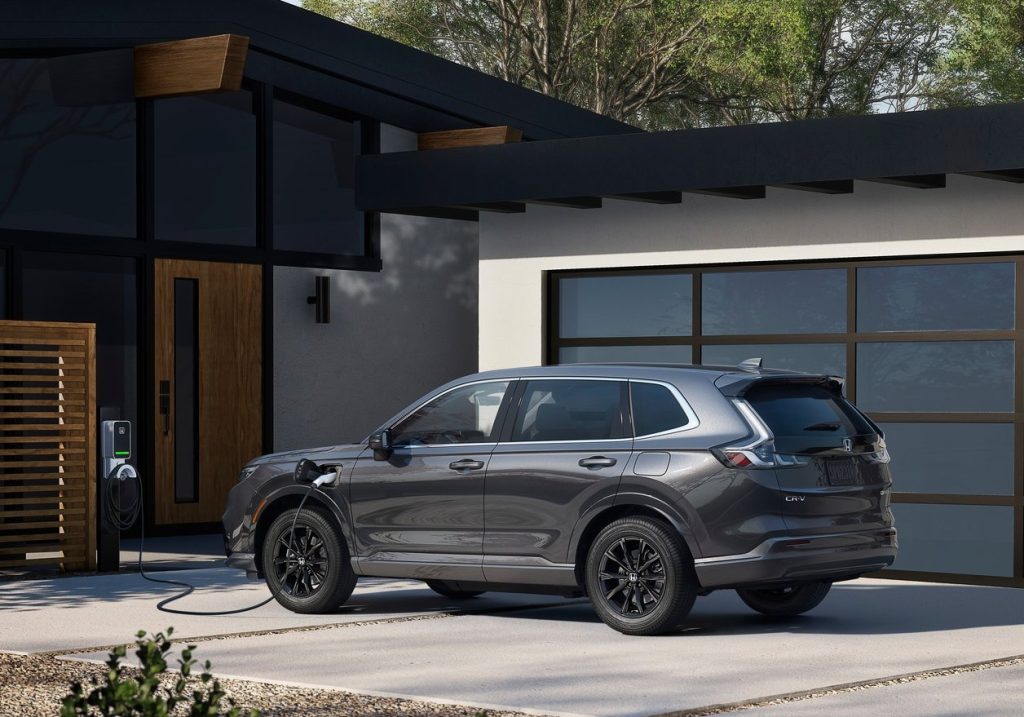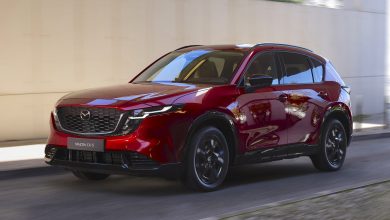Honda’s New CR-V e:FCEV Is A Hydrogen Fuel Cell Plug-In Hybrid

This Honda CR-V (on paper at least) combines long range capability with zero emissions EV motoring.
While EVs are certainly the in the zeitgeist right now, it is however the PHEV that is quietly the powertrain most buyers are putting their money behind.
The PHEV is after all a happy medium by offering the benefits of fully electric driving for the most part, with a large enough battery pack for short to even medium trips; but still has a fuel-based backup that in turn eliminates any form of range anxiety, in addition to any real need to suffer with long wait times at interstate EV chargers.
The problem with PHEVs however (on the environmental front at least) is that the combustion of fuel still churns out CO2 at the tailpipe, which isn’t exactly in line with this current zero-emissions agenda. Handily though, there is actually a way to have all the benefits of a quick refuelling time but have its only tailpipe emissions be water — Hydrogen. And it is likely on this particular train of logic that Honda has decided to pair a plug-in battery electric powertrain with a H2 fuel cell to create its new CR-V e:FCEV.
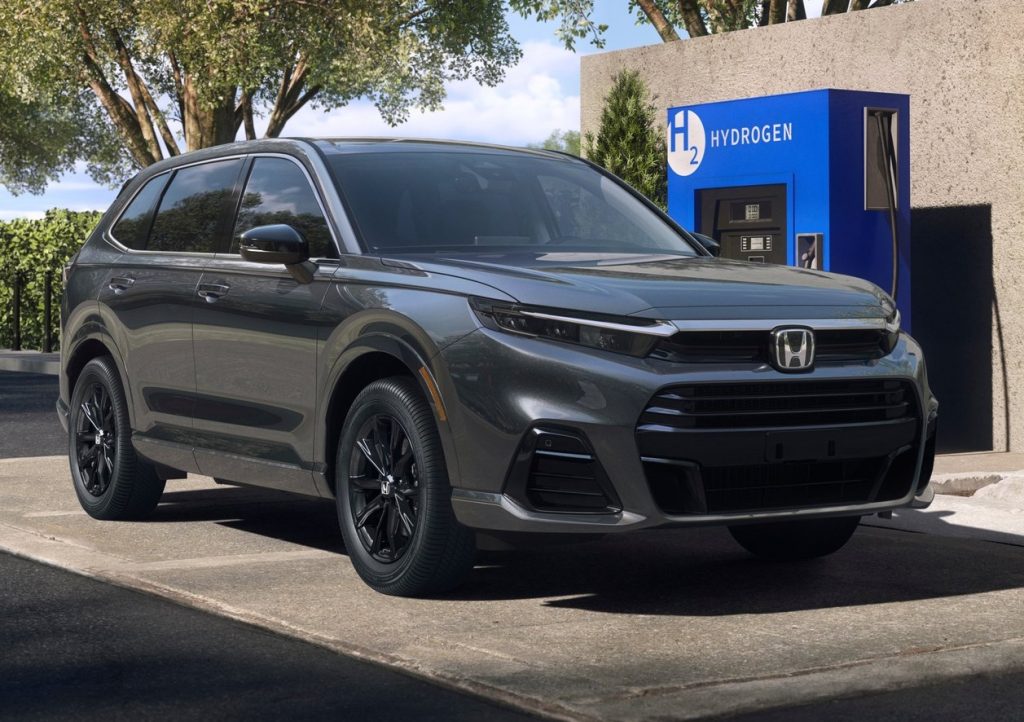
Touted by Honda to be the first of its kind (in the USA at least where it will primarily be sold), the CR-V e:FCEV is powered a single front-mounted electric motor that makes 174 hp and 311 Nm of torque. (Remember here that a hydrogen fuel cell are is still an EV, as the hydrogen fuel cell generates electricity!) What is perhaps the more interesting tech spec though with this car is that electricity generated to power the e-motor comes from either a 17.7 kWh battery pack, or a 92.2 kW second-generation fuel-cell module (co-developed with GM) that is in turn fed by a 4.3 kg hydrogen tank.
No performance figures have been revealed for this SUV, but the EPA currently rates the range of this still fully-electric drive CR-V to be 435 km, of which 47 km are capable from the battery alone. Honda goes on to claim for this battery to further support a bi-directional charging, which can supply electronic appliances with up to 1.5 kW of power through its 110 V on-board outlet.
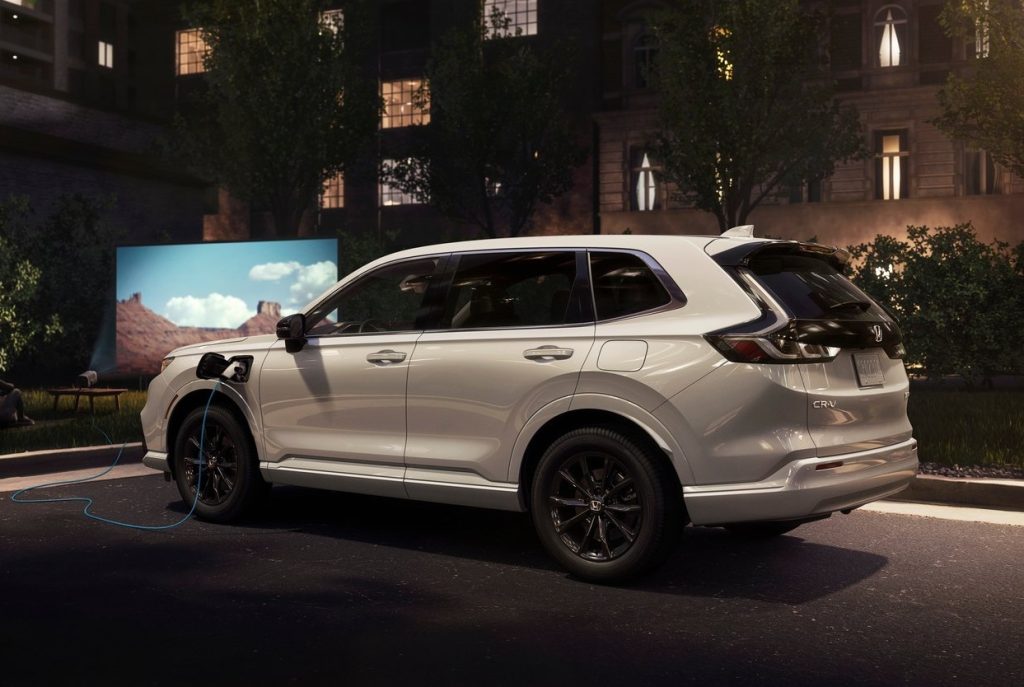
Now aside from the mechanical wizardry under the hood, the CR-V e:FCEV also features a reworked chassis and suspension setup with new stabiliser bars, springs and dampers, These alterations is however more so to cope with the increased weight relative to the ICE-powered and hybrid versions than for any performance gains, though its new a fully closed underfloor may help (slightly) in that regard by improving its aerodynamic efficiency.
Visually distinguishable from the regular variants of the CR-V on this H2 fuel-cell PHEV variant comes by way of redesigned front bumper that sports a slimmer grille and larger intakes, while the rear features a partially black tailgate and clear taillights. The charging port is mounted on the front left wing, while the hydrogen refuelling port is located at the left rear quarter of the vehicle.

Moving on inside meanwhile, the CR-V e:FCEV is to be exclusively available in the high-spec Touring trim of this sixth iteration Japanese mid-sized SUV. This in turn therefore sees all the bells and whistles being thrown in with it, which includes the 10.2-inch digital instrument cluster, a 9-inch infotainment touchscreen with wireless Apple CarPlay and Android Auto connectivity, a wireless charging, heated front seats, dual-zone climate control, a hands-free power tailgate, a 12-speaker Bose audio system, and an comprehensive set of ADAS as part of the Honda Sensing suite.
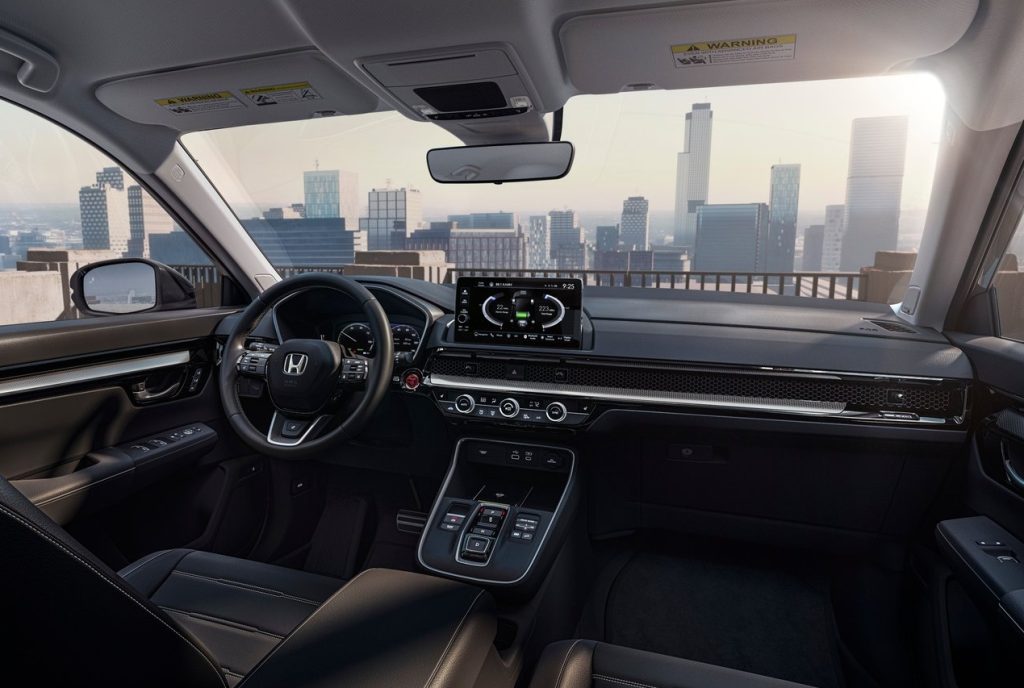
Built at Honda’s Performance Manufacturing Center in Marysville, Ohio (where the second-generation NSX was incidentally also produced), there has been no word regarding the price for the CR-V e:FCEV. Though given that it will only be made for customer leasing in California later this year, the lack of a firm price is not a big a deal as it would be.
What is however a bigger deal is that the debut of this CR-V e:FCEV comes just weeks after Shell announced that it has pulled the plug on its light-duty H2 refuelling station efforts in the golden state, which has hence saw the total number of refuelling options dwindle to an already minuscule 55 to an even more pathetic 47. And with H2 prices being rather high right now, this long-range capable zero-tailpipe emissions EV may well be tethered to the 47 km its battery will allow.
